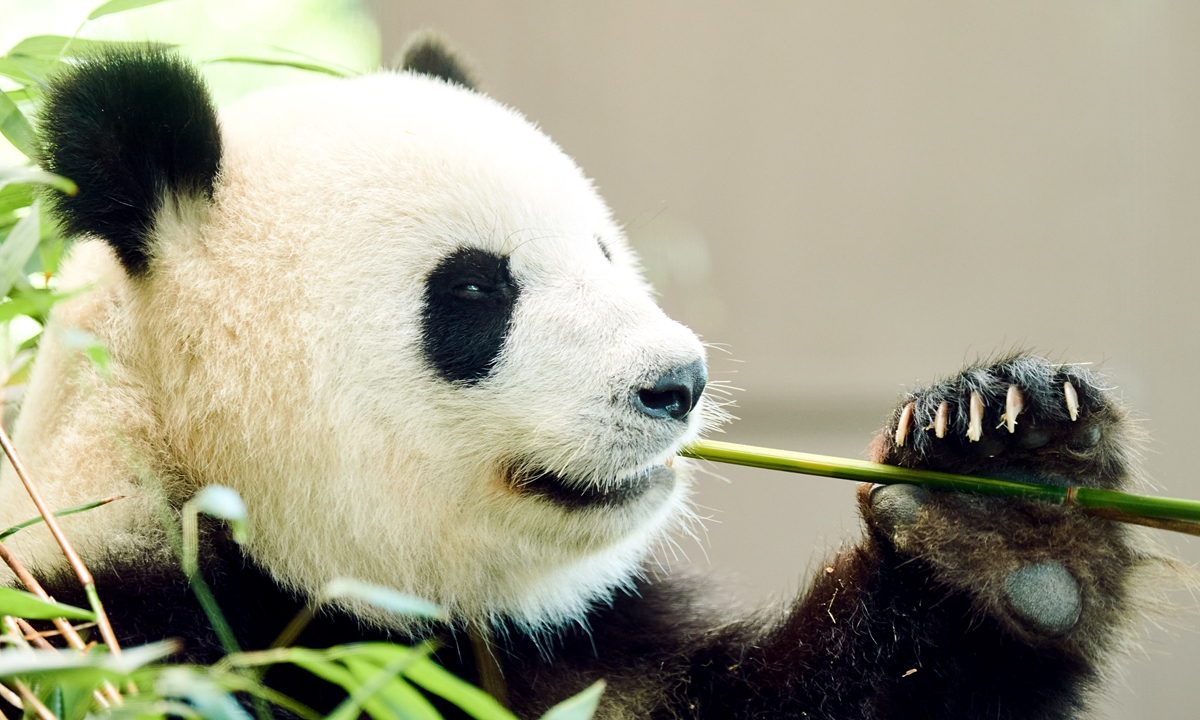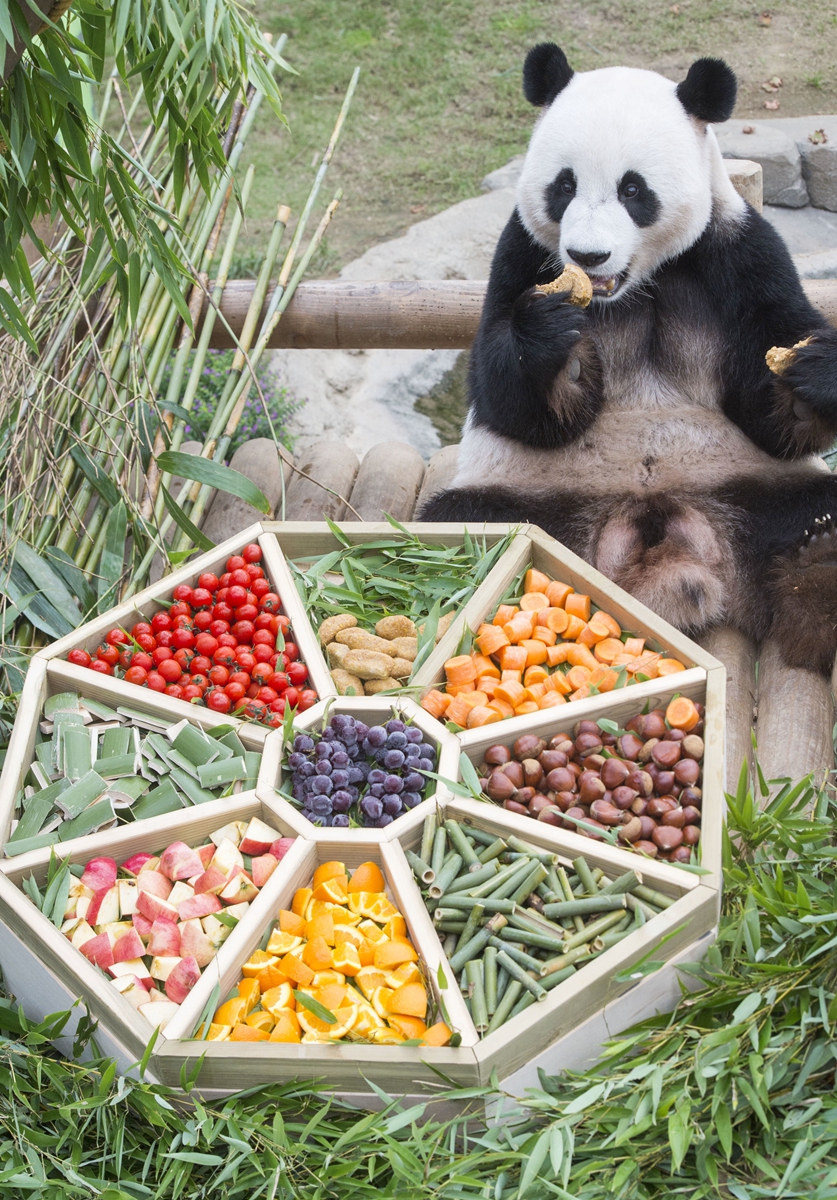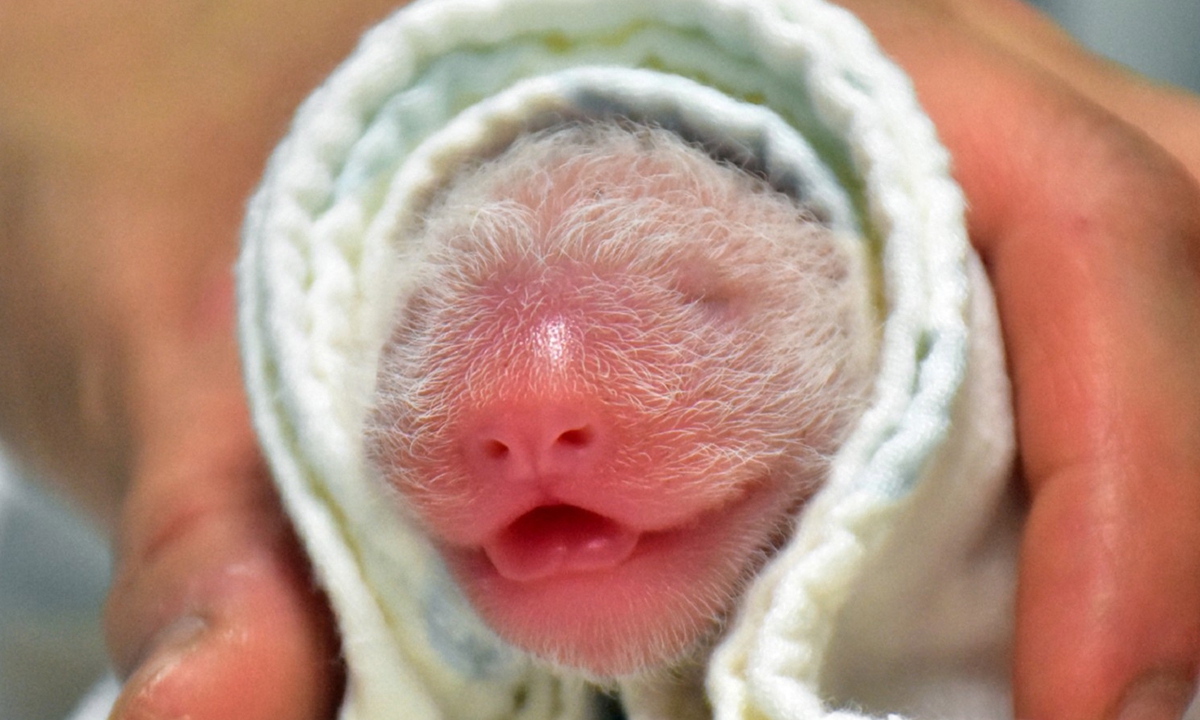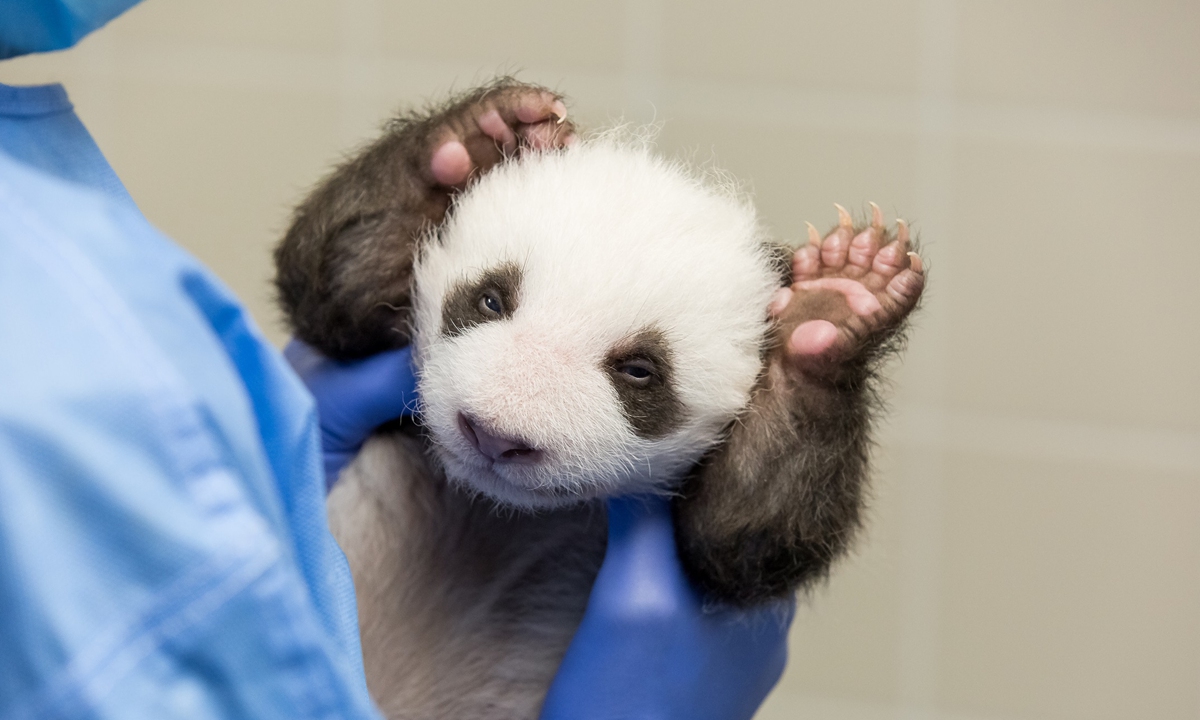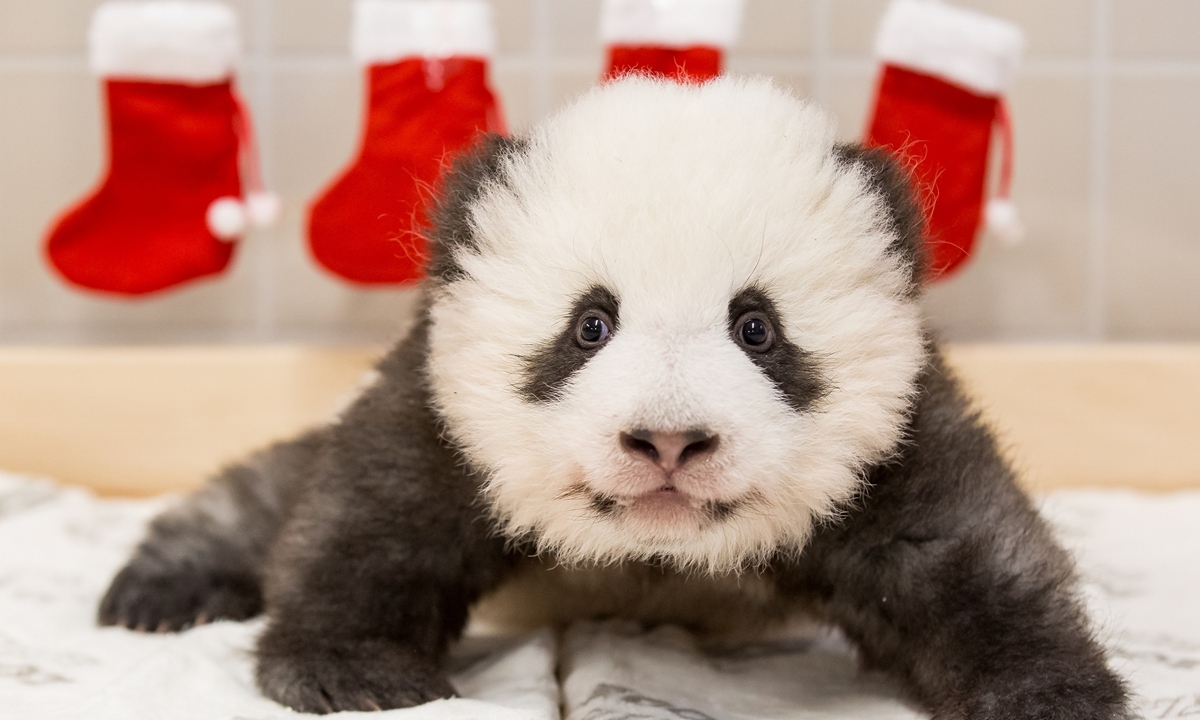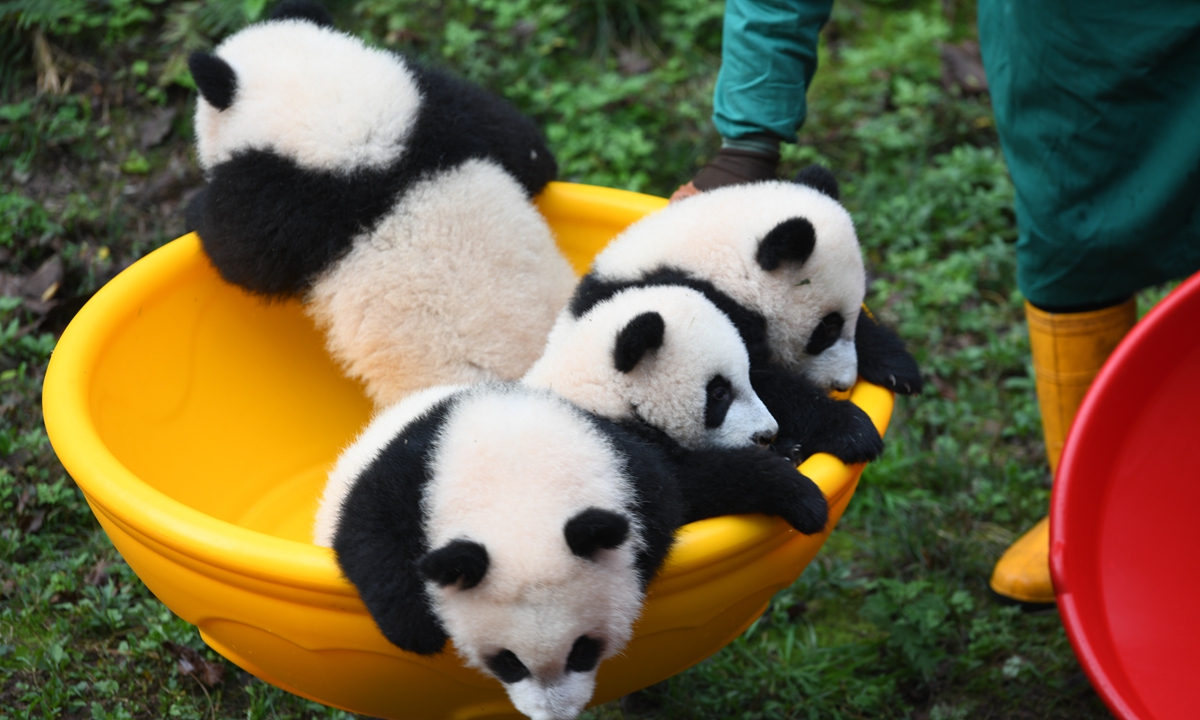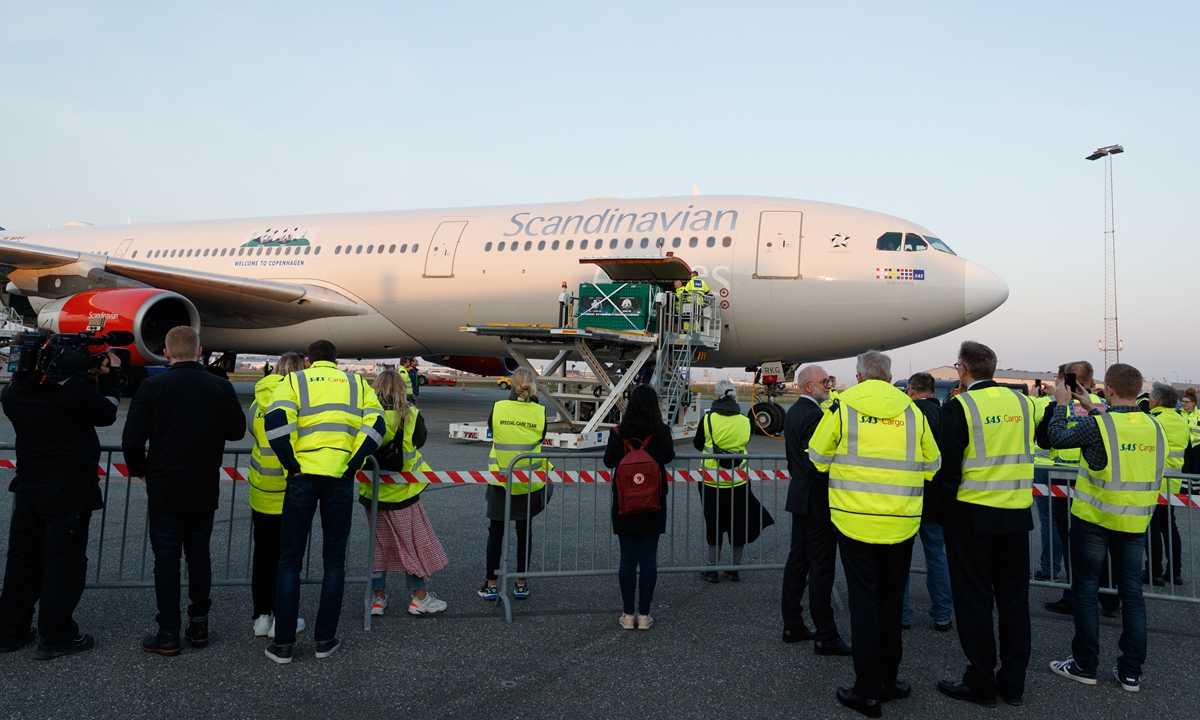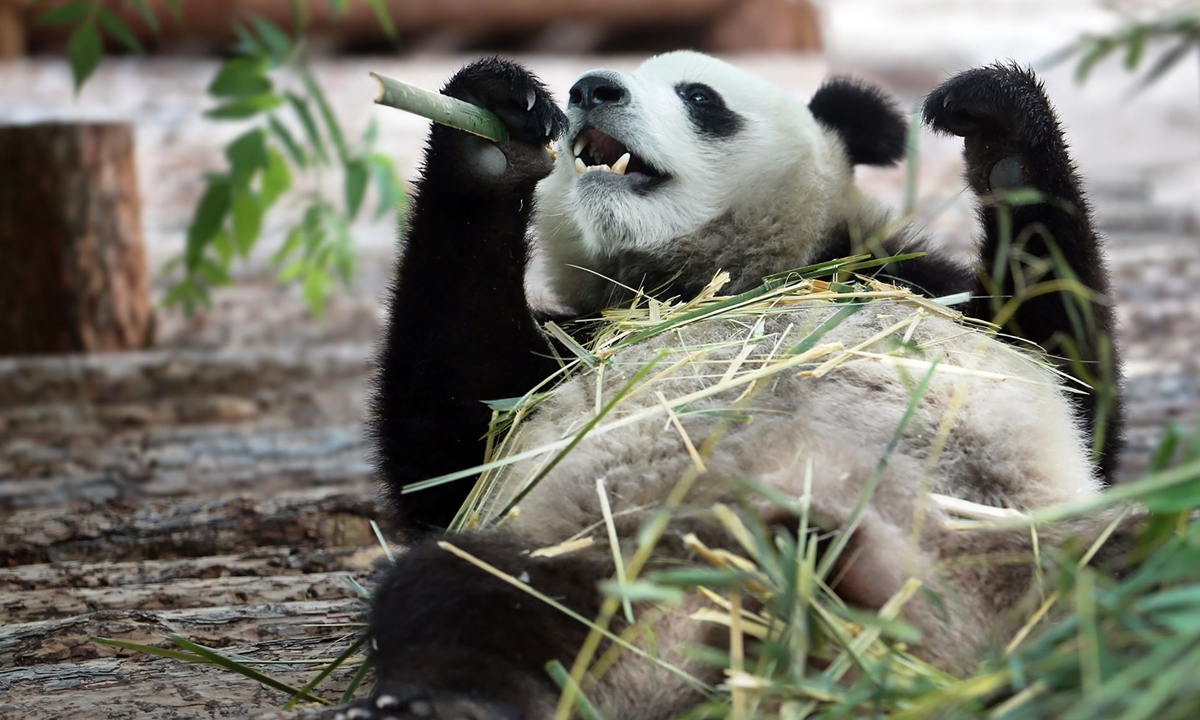Wu Kongju is a giant panda expert at the Chengdu Research Base for Giant Panda Breeding
Q: What kind of bamboo do pandas prefer?
A: Pandas can eat more than 50 kinds of bamboo and prefer scattered bamboo instead of tufted bamboo. The research base provides each panda 50 kilograms of food including bamboo shoots and bamboo every day.
Q: Does the research base have cooperation agreements with overseas zoos to supply them with food?
A: No, overseas zoos have their own channels to get bamboo and we do not directly offer them bamboo.
Q: How many pandas are there at the base?
A: The research base is being expanded and after the construction project is finished, it will reach about 2.3 million square meters and be able to house 300 giant pandas without any issues.
Q: How long does it take for a panda to give birth?
A: Like humans, different pandas take different amounts of time to give a birth. Some of them need dozens of hours while others might have a baby after half an hour. The average time is three to six hours.
Q: Does giving birth have risks?
A: The process seldom has risks. However, as baby pandas are small and weak when born, we need to always be diligent and stay focused when taking care of them.
Diao Kunpeng is a panda expert and director of Beijing Qingye Ecology, an ecological research and protection institution
Q: Is there a possibility that pandas will bring the novel coronavirus back when they return from overseas zoos?
A: There is no evidence that pandas can be infected with the virus.
Q: Do pandas undergo the same nucleic acid tests as humans?
A: Pandas have different nose and throat structures than humans, so I think that while they are the same in principle, there might be some differences when it comes to the actual process.
Q: Does it cost a lot to operate a Panda House?
A: Yes, a Panda House has to keep certain standards. It must have different spaces for a variety of activities such as outdoor play, sleeping and health examinations. Pandas love wet and cool weather but some cities are hot in the summer, so a temperature and humidity control system is very important to a Panda House.
